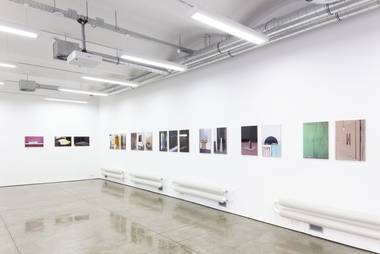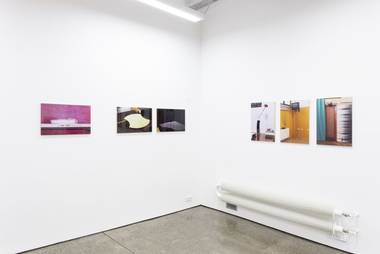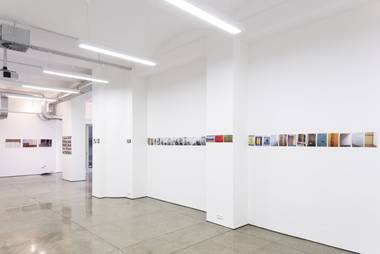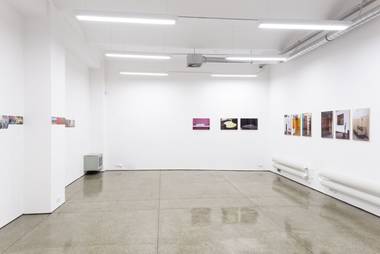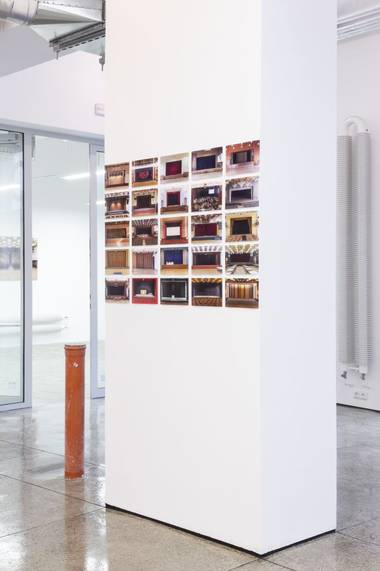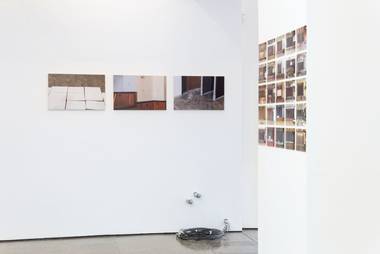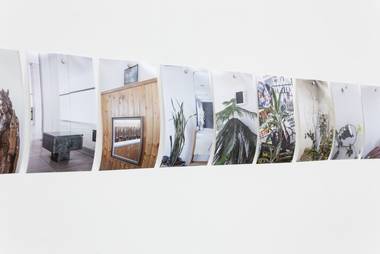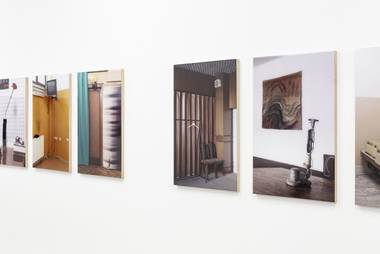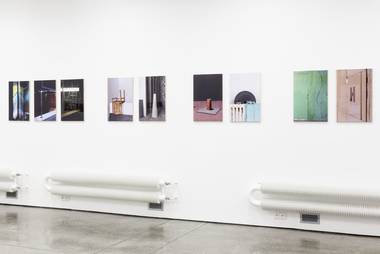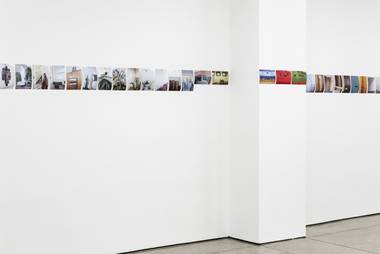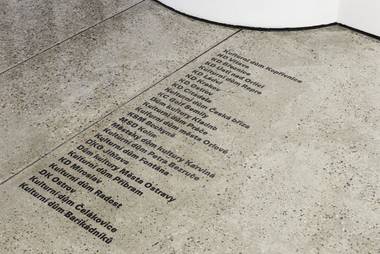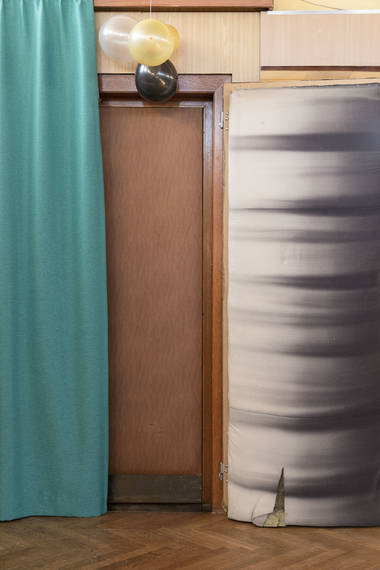Oskar Helcel a Martin Netočný: Houses of Culture
10. 10 – 10. 11. 2019
opening: 9. 10. 2019
curator: Michaela Janečková
the exhibition takes place within the Fotograf Festival
The photographs on display are not intended to offer a comprehensive overview of the dům kultury or house of culture. They are not divided into categories: facades, interiors, detailing and the like. There are no captions that would permit us to identify each of the twenty-six buildings on display and pinpoint their location on a map of the republic or a timeline. Though the sheer bulk of material collected over recent years, comprising hundreds of photos, would certainly allow for such a method of presentation, it would obscure the real reason the photos were taken. Inasmuch, therefore, as the rationale behind the photos is not to chart the process of creation and transformation, a different way of interpreting them emerges: to capture through photography these buildings as a “distinct phenomenon” in themselves.
The objective of both photographers could have been to observe a typology of houses of culture, the nationwide network systematically created during the period of state socialism, venues of a culture in part supported by the state and in part shared by society as a whole. In this case the aim would be to interrogate what houses of culture were and are, and show how their transformation mirrors the that of the values of our society over the last thirty years. Such an interpretation of the photographers’ intentions would certainly be intelligible and acceptable. It would also be simplistic. “Interrogation” is a verbal strategy often deployed in the texts accompanying exhibitions, a way of circumventing any acknowledgement that we are unable to describe in words how the photographs interact with our personal aesthetic preferences, memory and experience. Inasmuch as we make such an effort, we play a combinatory game with the individual and collective memory, with an interpretation of symbols encoded in groups of colours, shapes, materials and architectural details. Beneath each randomly revealed symbol lurks another. To quote Vilém Flusser: “Every symbol is just a tip of an iceberg in an ocean of cultural consensus, an even if one got right to the bottom of decoding a single message, the whole of culture past and present would be revealed.”
However, the role of photography is not simply to provide material for analysis and contemplation. Photography, like the history of art itself, is a tool for the active shaping of what we deem our past to be and how we look upon it. Photography renders its creators immortal in that what appear to be the objective images it offers us enter the subconscious and are reproduced over and over again by subsequent photographers until they acquire the status of shared truth. In the case of an exhibition, an important role is also played by the way that individual images are displayed, located in space, how they interact with each other and how the whole becomes greater than the sum of its parts. The layout of an exhibition implies whether that which is on show – in this case houses of culture – is to be understood as superficial retro, the ironic or celebratory documentation of society under the rule of communist party or an analysis of what a shared culture means to us today.
The photographs of Houses of Culture are presented in the premises of the Centre for Contemporary Arts Prague in two basic formats. In the case of the larger photos, consideration is given to what we might call the affinity between sedimentary layers, scale, and colour. In the case of the smaller works we might indeed be justified in speaking of an interrogation of what makes a House of Culture what it is, from the artworks, through the doors to the main hall, all the way to the curtains and flooring. Twenty-five shots of the stages of the main halls are set aside on a solitary column of the exhibition space. In one and the same type of shot it is possible to see the layering of architectural and technical features or materials from the time the house was built. And to some extent we can also make out the subsequent fortunes of a building, including today’s consensus regarding how a representative “stage of culture” should look. To paraphrase Flusser: The technical images of Helcel and Netočný absorb the whole of history and form a collective memory going endlessly round in circles.
Michaela Janečková
(transl.: Phil Jones)
The exhibition program of the CCA is possible through the kind support of Ministry of Culture of the Czech Republic, Prague City Council, State Fund of Culture of the Czech Republic, City District Prague 7
Partner: Kostka stav
Media support: ArtMap, jlbjlt, UMA Audioguide
